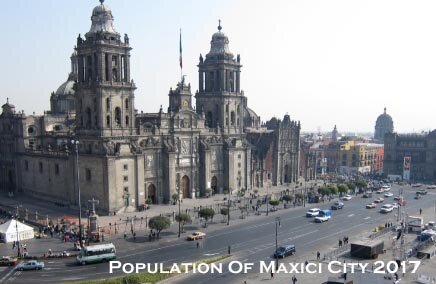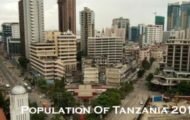Mexico City is an American Spanish city and the capital and most populous city of Mexico. As an “alpha” global city it is one of the most important financial centers in the Americas. The city consists of sixteen municipalities formerly known as boroughs. Mexico City is also the Federal District, which is a federal entity within the country that is not actually any one of the 31 states but belongs to the federation as a whole.

According to the most recent survey the Greater Mexico City population is 21.2 million people, making it the largest metropolitan area of the world’s western hemisphere and tenth-largest agglomeration and world’s largest Spanish-speaking city.
The Greater Mexico City has a gross domestic product (GDP) of US$411 billion in 2011, making Mexico City urban agglomeration one of the economically largest metropolitan areas in the world.
Mexico City is the oldest capital city in the Americas, the other being Quito. The city was originally built on an island of Lake Texcoco, which was downright destroyed in the 1521 siege of Tenochtitlan, and subsequently rebuilt in accordance with the Spanish urban standards. In 1524, the municipality of Mexico City was re-established, known as Ciudad de México (Mexico City). Mexico City served as the political, administrative and financial center of a major part of the Spanish colonial empire. After independence from Spain was achieved, the federal district was created in 1824.
POPULATION OF MEXICO CITY IN 2017:
Talking about population, in order to check out the population of Mexico City in 2017, we need to have a look at the population of the past 5 years. They are as per the following:
- 2012 – 8.4 million
- 2013 – 8.57 million
- 2014 – 8.69 million
- 2015 – 8.8 million
- 2016 – 8.91 million
MEXICO CITY Population 2017 – 9 million(Estimated)
The 2016 population of Mexico City, based on government figures, is 8,918,653. The estimated population in 2017 is 9 million.
Mexico City has a long, rich history and is known for being one of the largest financial centers in the continent and the largest Spanish-speaking city in the world. Mexico City is considered one of the largest cities in the world and is home to 20% of Mexico’s entire population.
The population of 8,918,653 in 2016 is up from 8.851 million in 2010. The metropolitan area, however, is much larger with a population of 21.2 million people, making Mexico City the most populous metropolitan area in the Western Hemisphere.
Greater Mexico City is formed of 60 municipalities from the State of Mexico. It’s the most densely populated area in the country. As of 2015, the biggest municipalities in Greater Mexico City, excluding Mexico City proper, were:
Ecatepec (1.6 million)
Nezahualcóyotl (1.1 million)
Naucalpan (833,000)
Tlalnepantla de Baz (664,000)
Chimalhuacán (602000)
Ixtapaluca (467,000)
Cuautitlán Izcalli (533,000)
Atizapan de Zaragoza (490,000)
As of 2016, 75% of total Mexico’s population, or approximately 10 million people, lives in a municipality that’s part of Greater Mexico City.
The city’s population has grown surprisingly over the past six decades. In 1950, the city had a population of just 2.9 million — making it the 16th largest in the world. But the population of Mexico City expanded over 30 years and has continued to expand ever since, with the current population at 20.5 million.
DEMOGRAPHICS OF MEXICO CITY:
The Mexican region is one of the most densely populated regions in the country. A Census showed more than 54% of the city’s population was Mestizo (or Indigenous mixed with European ancestry), 23% was European and almost 19% was Indigenous.
Mexico City today is home to large numbers of immigrants and expatriates from Canada, the United States, South America especially Colombia and Argentina, Central America particularly Guatemala and El Salvador, the Caribbean mainly Cuba and Haiti, Europe particularly Spain and Germany and the Middle East particularly Egypt, Syria and Lebanon. Most recently, there has been an influx of immigrants from Asia-Pacific countries like South Korea and China.
It’s estimated there are 700,000 US Americans in Mexico City out of total one million US immigrants in the entire country.
Census data has shown that the numbers of foreigners in the country has grown by 95% in the last decade, the majority of which are from the US. In 2004, a World Bank study found that 11% of the urban population in the country was extremely poor, while 42% was moderately poor.
MEXICO CITY POPULATION DENSITY AND GROWTH RATE:
Mexico City population density is 679 per square kilometers.
Mexico City is considered one of the largest cities in the world and is home to 20% of Mexico’s entire population. Mexico City’s 2016 population is now projected at 8,918,653 this is 20% of Mexico’s entire population. The estimated population of Mexico in 2017 is 9 million. Urban migration has slowed, and now natural growth is the main cause of Mexico City’s population growth. In 1950, the population of Mexico City was 3,365,000. Mexico City has grown by 158,000 in the last year, which represents a 0.80% change. Despite its growth, the annual growth rate of the Mexico City metropolitan area is lower than most other urban agglomerations in the country, and the net migration rate in the Federal District was negative from 1995 to 2000.
FACTS ABOUT MEXICO:
1. Founded in 1325, Mexico City is the oldest capital city of the Americas.
2. Mexico City was the second most populated city of the world for many years, after Tokyo. However, according to UN’s “2014 revision of the World Urbanization Prospects”, now this is the fourth largest city with around 22 million people (Tokyo, Delhi and Shanghai make the top 3).
3. It is one of the wealthiest cities of the world, its economic growth is one of the highest at 7th position in the world.
4. The city is located on mountains, 2.2 kilometers above sea level, and its weather is mild rather than warm. Though some people who are not used to these high altitudes may experience difficulty breathing when first landing in Mexico City, this symptom normally lasts for a couple of hours.
5. Gays and lesbians are welcome since Same-sex marriage is legal there and so is adoption by same-sex couples. In 2010, the city offered a free honeymoon to Latin America’s first gay couple to wed.
6. The city was built on a lake. It turns out the dried-out bed of a big lake isn’t the best foundation for building construction. Government officials have estimated that the city is sinking at a rate of 10 centimeters (4 inches) per year. A recent government report (PDF) estimated that Mexico City has sunk 10 meters (32.8 feet) in the past 60 years.
7. One of the world’s richest men lives here. Mexican telecom tycoon Carlos Slim topped Forbes Magazine’s list of the world’s richest men for four years.
Find Latest Mexico Population in 2018



